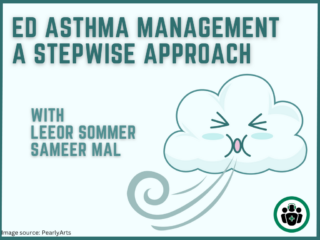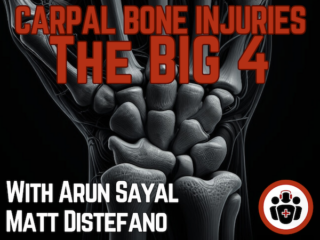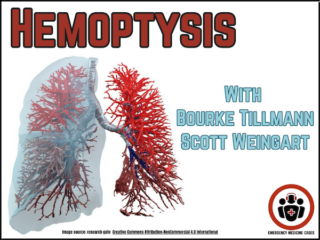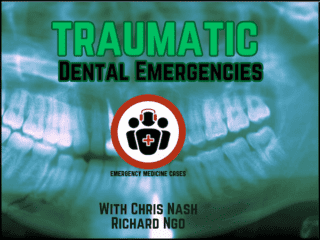EM Cases Main Episodes are round table in-depth discussions with 2 or more EM Cases guest experts, inherently peer reviewed, and edited for a podcast.
Ep 193 The Crashing Asthmatic – Recognition and Management of Life Threatening Asthma
In this part 2 of our 2-part podcast on asthma with Dr. Sameer Mal and Dr. Leeor Sommer, we dig into the recognition and management of life-threatening asthma. We answer such questions as: what are the key elements in recognition of threatening asthma? What are the most time-sensitive interventions required to break the vicious cycle of asthma? What are the best options for dosing and administering magnesium sulphate, epinephrine, fentanyl and ketamine in the management of the crashing asthmatic? What is the role of NIPPV in the management of life-threatening asthma? What are the factors we should consider when it comes to indications for endotracheal intubation of the crashing asthmatic? What role do blood gases play in the decision to intubate? What are the most appropriate ventilation strategies in the intubated asthma patient? and many more... Please support EM Cases with a donation: https://emergencymedicinecases.com/donation/










